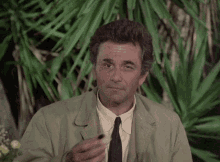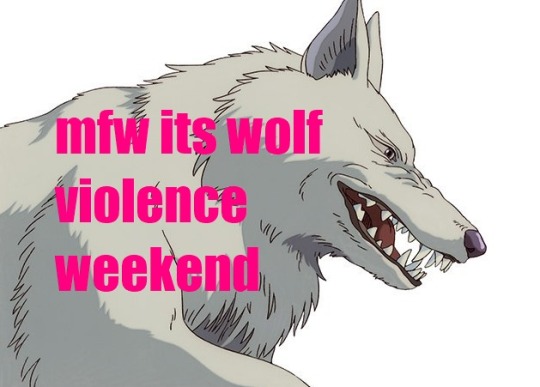Anticolonial ecology /// Usual stuff: peripheries, hinterlands, borderlands, so-called frontiers - environmental history of Empire(s) and colonization - carceral geography, confinement, disobedience, escape - multispecies relationships - extractivism, extinction, endemic species - imaginaries of space/place - "the sciences" as "agents of empire" - debris, ruination, remnants - tidalectics, archipelagos - the eerie, being haunted - silly stuff - writing, excerpts, resources /// Me: Trans, autism, severe chronic illness(es), disabilities, debt/homelessness problems. Into geography. I like reptiles and amphibians (esp. salamanders). To see what I usually post about, search tags like: multispecies, tidalectics, abolition, ecologies
Don't wanna be here? Send us removal request.
Text
Nice argument bro. Unfortunately for you, the meteor is coming
22K notes
·
View notes
Text
a proposition has been submitted to build a satellite which can detect trans women from orbit and fire lasers at them. opponents of the plan are saying that it could incorrectly identify them as well and they don't want to be wrongly fried
3K notes
·
View notes
Text
plummeting stocks show an "ageric" reaction from investors amid gagobear market fears
81 notes
·
View notes
Text
If me and adorno hung out he would actually like my favorite movies. He would retract some of his former statements and make addendums about how the movies i like are pretty good and cool
336 notes
·
View notes
Text
#up all night last night for mandatory class performance then biking seven miles to work twelve hours today#then ten hours conference presenting and writing tomorrow followed immediately by another work shift
37K notes
·
View notes
Text
The [...] British quest for Tahitian breadfruit and the subsequent mutiny on the Bounty have produced a remarkable narrative legacy [...]. William Bligh’s first attempt to transport the Tahitian breadfruit [from the South Pacific] to the Caribbean slave colonies in 1789 resulted in a well-known mutiny orchestrated by his first mate [...]. [T]he British government [...] successfully transplanted the tree to their slave colonies four years later. [...] [There was a] colonial mania for [...] the breadfruit, [...] [marked by] the British determination to transplant over three thousand of these Tahitian food trees to the Caribbean plantations to "feed the slaves." [...]
Tracing the routes of the breadfruit from the Pacific to the Caribbean, [...] [shows] an effort initiated, coordinated, and financially compensated by Caribbean slave owners [...]. [During] decades worth of lobbying from the West Indian planters for this specific starchy fruit [...] planters [wanted] to avert a growing critique of slavery through a "benevolent" and "humanitarian" use of colonial science [...]. The era of the breadfruit’s transplantation was marked by a number of revolutions in agriculture (the sugar revolution), ideology (the humanitarian revolution), and anticolonialism (the [...] Haitian revolutions) [as well as the American and French revolutions]. [...] By the end of Joseph Banks’ tenure [as a botanist and de facto leader] at the Kew Botanical Gardens [royal gardens in London] (1821), he had personally supervised the introduction of over 7,000 new food and economic plants. [...] Banks produced an idyllic image of the breadfruit [...] [when he had personally visited Tahiti while acting as lead naturalist on Captain James Cook's earlier voyage] in 1769 [...].
---
[I]n the wake of multiple revolutions [...], [breadfruit] was also seen as a panacea for a Caribbean plantation context in which slave, maroon, and indigenous insurrections and revolts in St Vincent and Jamaica were creating considerable anxiety for British planters. [...]
Interestingly, the two islands that were characterized by ongoing revolt were repeatedly solicited as the primary sites of the royal botanical gardens [...]. In 1772, when St Vincentian planters first started lobbying Joseph Banks for the breadfruit, the British militia was engaged in lengthy battle with the island’s Caribs. [...] By 1776, months after one of the largest slave revolts recorded in Jamaica, the Royal Society [administered by Joseph Banks, its president] offered a bounty of 50 pounds sterling to anyone who would transfer the breadfruit to the West Indies. [...] [A]nd planters wrote fearfully that if they were not able to supply food, the slaves would “cut their throats.” It’s widely documented that of all the plantation Americas, Jamaica experienced the most extensive slave revolts [...]. An extensive militia had to be imported and the ports were closed. [...]
By seeking to maintain the plantation hierarchy by importing one tree for the diet of slaves, Caribbean planters sought to delay the swelling tide of revolution that would transform Saint Domingue [Haiti] in the next few years. Like the Royal Society of Science and Arts of Cap François on the eve the Haitian revolution, colonists mistakenly felt they could solve the “political equation of the revolution […] with rational, scientific inquiry.” [...]
---
When the trees arrived in Jamaica in 1793, the local paper reported almost gleefully that “in less than 20 years, the chief article of sustenance for our negroes will be entirely changed.” […] One the one hand, the transplantation of breadfruit represented the planters’ attempt to adopt a “humanitarian” defense against the growing tide of abolitionist and slave revolt. In an age of revolution, [they wanted to appear] to provide bread (and “bread kind”) [...]. This was a point not to be missed by the coordinator of the transplantation, Sir Joseph Banks. In a letter written while the Bounty was being fitted for its initial journey, he summarized how the empire would benefit from new circuits of botanical exchange:
Ceres was deified for introducing wheat among a barbarous people. Surely, then, the natives of the two Great Continents, who, in the prosecution of this excellent work, will mutually receive from each other numerous products of the earth as valuable as wheat, will look up with veneration the monarch […] & the minister who carried into execution, a plan [of such] benefits.
Like giving bread to the poor, Banks articulated this intertropical trade in terms of “exalted benevolence,” an opportunity to facilitate exchange between the peoples of the global south that placed them in subservience to a deified colonial center of global power. […]
---
Bligh had no direct participation in the [slave] trade, but his uncle, Duncan Campbell (who helped commission the breadfruit journey), was a Jamaican plantation owner and had employed Bligh on multiple merchant ships in the Caribbean. Campbell was also deeply involved, with Joseph Banks, in transporting British convicts to the colonies of Australia. In fact Banks’ original plan for the breadfruit voyage was to drop off convicts in (the significantly named) Botany Bay, and then proceed to Tahiti for the breadfruit. Campbell owned a series of politically untenable prison hulks on the Thames which he emptied by shipping his human chattel to the Pacific. Banks helped coordinate these early settlements [...] to encourage white Australian domesticization.
The commodification and rationalist dispersal of plants and human convicts, slaves, the impoverished, women, and other unwilling participants in global transplantation is a rarely told narrative root of colonial “Bounty.”
---
All text above: Elizabeth DeLoughrey. “Globalizing the Routes of Breadfruit and Other Bounties”. Journal of Colonialism and Colonial History Volume 8, Number 3, Winter 2007. DOI at: doi dot org slash 10.1353/cch.2008.0003 [Bold emphasis and some paragraph breaks/contractions added by me. Presented here for commentary, teaching, criticism purposes.]
125 notes
·
View notes
Text
i dont like it when the task avoidance gets to the scary part
5K notes
·
View notes
Text
I feel like if the world was ever rent asunder on a metaphysical level dinner would go first. If you ever notice the concept of dinner stops existing that’s our canary in the dinnermine
843 notes
·
View notes
Text
The road of good intentions is paved with "neocrete" my new patented concrete replacement Entirely hydrophobic and extremely dense entire cities are now sinking into the water table
4K notes
·
View notes
Text
you people understand fuck all. I need her making a single misstep after a long exhausting clash of steel and paying with her life. on it.
496 notes
·
View notes
Audio
here it is, the funniest most absurd line spoken in all of kingdom hearts
147K notes
·
View notes
Text
Small clams court. Sand dollar lawsuit. Who gives a fuck
7K notes
·
View notes




